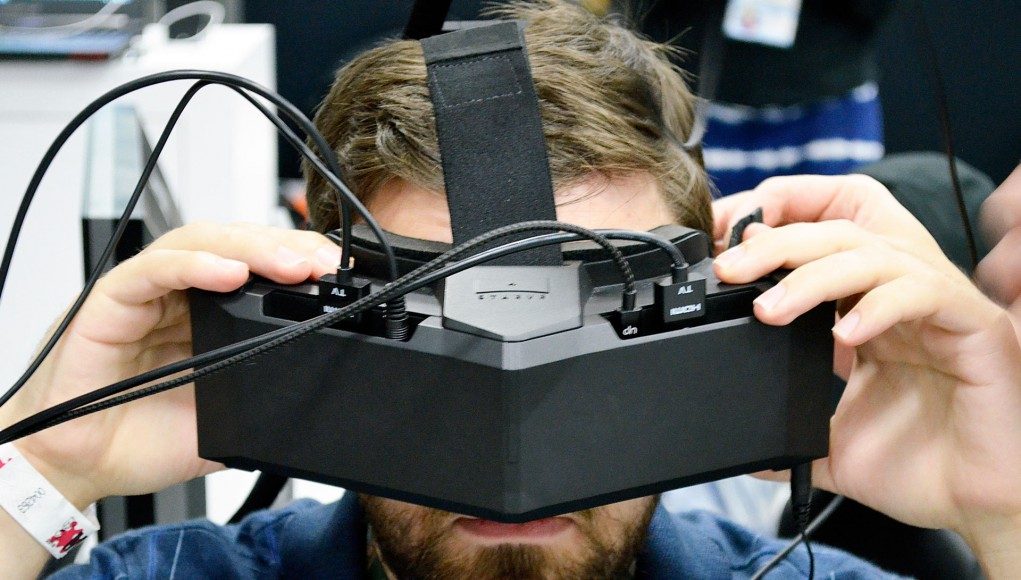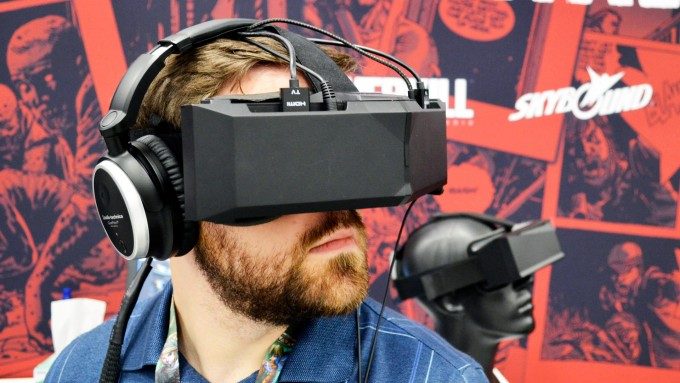IMAX has announced it’s raised $50m in order to create new “premium” experiences for use at its VR centres which the company have begun rolling out around the world.
By the end of 2016, IMAX VR centres should be up and running in six locations around the world, with the first two nearing completion in Los Angeles and Manchester (England). The aim is to provide a higher quality VR experience than what can be achieved at home, and to produce and deliver unique VR content for these centres.
Part of this strategy is the collaboration with Starbreeze, a Swedish game development studio who are in the process of creating a high-end VR headset called StarVR; a device that will become a key element of IMAX VR’s experience. While VR headsets such as the HTC Vive and Oculus Rift are capable of delivering IMAX-like visuals in terms of scale and immersion, the StarVR headset’s significantly wider field of view (210 degrees vs 100 degrees) and higher resolution (5120×1440 vs 2160×1200) is certainly more worthy of being associated with the IMAX brand.
But a great headset is worthless without great content, and today, IMAX confirmed the completion of the first phase of a $50 million virtual reality fund, with investors including Acer, CAA, China Media Capital, Enlight Media, The Raine Group, Studio City and WPP. The aim is to create at least 25 new interactive experiences over the next 3 years – “a new level of premium, high-quality content for use throughout the VR ecosystem,” according to IMAX Corp. CEO Richard L. Gelfond. “We will be leveraging our collective relationships with world-class filmmakers and content creators to fund VR experiences that excite and attract a larger user base to capitalize on opportunities across all VR platforms including IMAX VR.”
We can expect the content to be largely associated with existing movie franchises from their Hollywood and film industry partners, as well as gaming publishers and other leading content developers, with each experience lasting between 5 and 15 minutes. As customers already pay a premium for the IMAX movie experience, IMAX VR will need to deliver something equally far ahead of the curve if they are to charge a similar premium, and Starbreeze CEO Bo Andersson Klint hopes to be ‘five years ahead’ of home VR, which could indeed justify the effort and expense.
But the most interesting part of the announcement is that IMAX are looking beyond the cinema and want to deliver on all VR headsets. It is essential for IMAX to remain relevant as we enter a brave new world of fully-immersive entertainment, and embracing VR, both in terms of offering unique experiences at traditional IMAX venues and attaching their brand to quality VR content accessible on any headset, seems like a sensible approach.








